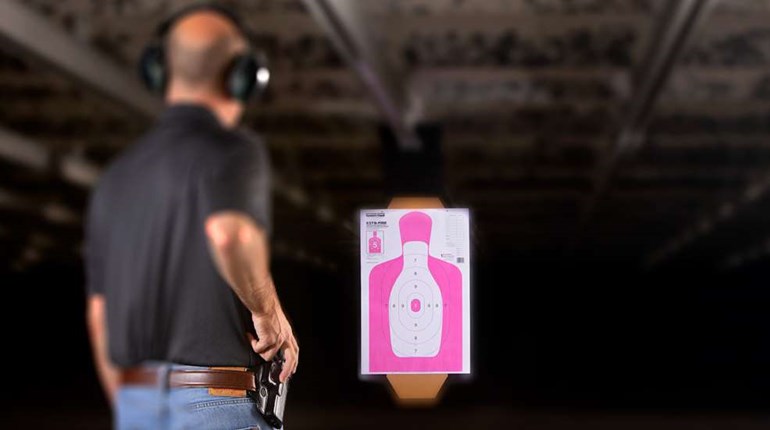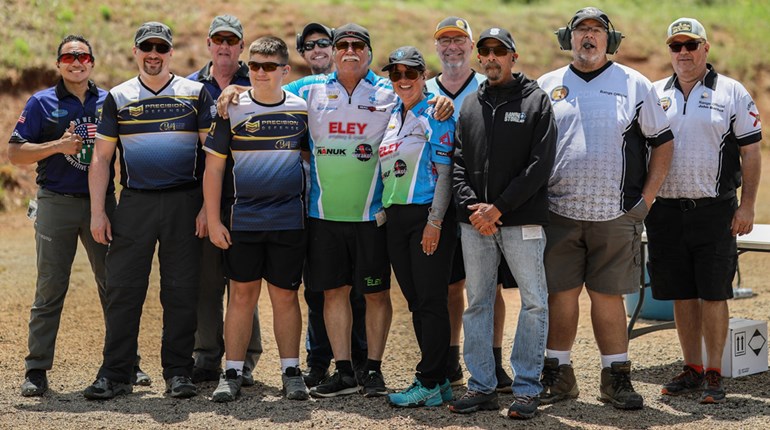
Are you a good shooter? Good in comparison to what? Compared to an entry level shooter? Compared to a Grandmaster USPSA Competitor? When it comes to shooting well, “good” is a subjective term. The term provides neither comparison nor quantification and is a judgement based squarely on the predilections of the person using it.
In performance shooting, the term “good” is pushed even further under the bus because it simply doesn’t apply. The only measuring stick in the highly competitive performance-shooting world is the level of control you have of your firearm.
Multi-time world champion competition shooter Rob Leatham uses the term “control” as his performance shooting tape measure. How much control do you have of the shooting process?
According to Rob, who passed the Grandmaster milestone way back in the 1900s, the shooting process is defined as “bringing stability to alignment and pressing off a round without disturbing that alignment.” To the degree you control the process is to the degree you control the gun.
Albert Einstein once said ‘“If you can’t explain it to a six-year-old, you don’t understand it yourself.” So, how does Leatham explain his control levels to a six-year-old? He utilizes a very simple and effective drill to determine where a shooter falls in the spectrum of control.
Get The Zone
Interested to know where you stand? Set up a standard IPSC cardboard target at the 25-yard line. Start with hands by your side. Handgun in the holstered position. On the go command, draw and deliver five rounds on target based on an aimpoint, in five seconds or less.
- If your aimpoint is the center of the target and you fail to place any rounds, not one, anywhere on that target, then you have “less-than-optimal control.”
- If your aimpoint is the center of the target and you hit all five rounds anywhere on the cardboard not outside the ‘D’ zone, then you have “moderate” control.
- If your aimpoint is the center of the target and you hit all five rounds not outside the ‘C’ zone, then you have “acceptable” control.
- If your aimpoint is the perforated “A”-box in the body, and you hit all five rounds not outside that ‘A’ zone then you have “excellent” control.
- If your aimpoint is the head and you hit all five rounds anywhere in the head, then you have “exceptional” control.
- If your aimpoint is the perforated “A”-box in the head and you hit all five rounds inside that head “A”-box then you have “total control.”
The six possible outcomes are: less-than-optimal, moderate, acceptable, excellent, exceptional and total control. Regardless of your shooting skills, your control level, when measured, will fall under one these categories.
Leatham’s drill puts it all into perspective. It quantifies the process as opposed to qualifying the result. It smacks you in the face with the cold mackerel of “this is what it takes!” It takes that level of mental focus, that level of mechanical skill and that level of visual discipline to follow the process to meet a specific control level.
Instead of qualifying a shooter via result of the process (put “x” number of rounds here in ‘y’ amount of time) you are now quantifying the level of focus it takes mechanically, visually and mentally to appropriately execute the shooting process for that level. You now know this is what it takes to do that thing.
How Controlled Are You?
It takes “x” number of units of mental focus, so how can you possibly quantify focus? Is there such a thing as mental focal units? Regardless, it takes that amount of focus. Knowing that is correct (right) and not using that is (wrong or) incorrect. That is the level of focus required to meet with success at each control level.
Whatever your level is below total control, it is an indicator that further skills development is required of the subcomponent processes. One is the draw or presentation process. Another is the actual trigger press without disturbing alignment. Yet another is your Superman-red-laser-eye-beam, visual-target focus. After isolating and further developing each of these sub-processes, “work on the spaces in between,” as Bill Rogers would say, to reduce your time.
We all want to be better shooters, but what exactly is that? How much better? How is that quantified? Better than what? Traditionally, your qualification results will be better, but it’s fruitless to chase results as opposed to focus on the process. Process focus is the “A” answer.
The benefit of knowing your control level is that it gives you a tangible reference. Knowing what “right” feels like provides an attainable objective.
Good, bad or indifferent, quantification of the process as opposed to qualification of a result, provides a knowingness of “right” from “wrong” during the shooting process. According to Leatham, and others of his ilk, the answer is total control. Anything less than that is an indicator that more work is needed.






































